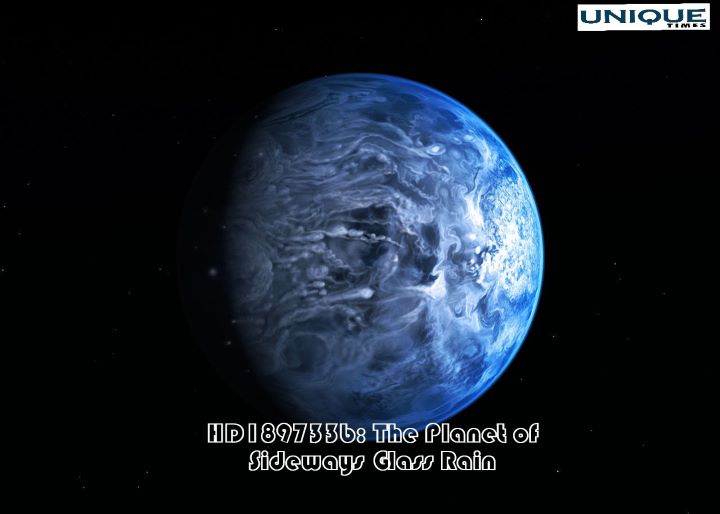HD189733b: The Planet Where it Rains Sideways… Glass!

Welcome to a world beyond imagination! Imagine a planet so alien, so bizarre, that it challenges everything we thought we knew about the universe. HD189733b, a planet located approximately 63 light-years away from Earth, is one such enigmatic celestial body. With its stunningly Earth-like appearance, HD189733b lures us in with familiarity, only to reveal its mesmerizing secret: it rains glass sideways! In this blog, we will delve into the captivating and extraordinary world of HD189733b, exploring its unique atmosphere, its striking weather phenomenon, and what it means for our understanding of planetary science.
Unveiling HD189733b
HD189733b is an exoplanet, meaning it exists outside our solar system, orbiting a star known as HD189733. It belongs to a class of planets called “hot Jupiters,” gas giants that orbit extremely close to their parent stars. Due to its close proximity to the star, HD189733b is a scorched world with surface temperatures reaching up to a blistering 2000 degrees Fahrenheit (1093 degrees Celsius).
Earth’s Evil Twin
At first glance, HD189733b appears like Earth’s evil twin. Its deep azure hue gives the impression of a massive, giant blue marble. However, this world is no paradise. The beautiful blue color is not due to vast oceans or lush vegetation but rather the result of a complex atmospheric composition. HD189733b’s atmosphere is laden with silicate particles, which scatter blue light, creating the striking blue appearance.
A Hellish Atmosphere
HD189733b’s atmosphere is a chaotic and deadly mix of hydrogen, helium, and a variety of other molecules. High-speed winds sweep across the planet at speeds exceeding 4,500 miles per hour (7,242 kilometers per hour), causing immense turbulence. The combination of heat and intense winds creates a turbulent maelstrom of glass particles that gives rise to its fascinating weather phenomenon: sideways glass rain.
Sideways Glass Rain
The glass rain on HD189733b is a mind-boggling spectacle. The silicate particles in the atmosphere are subjected to such extreme conditions that they condense into tiny glass shards. These glass particles are then propelled horizontally by the powerful winds, creating a sideways rain of glass across the planet. It is a mesmerizing yet terrifying sight to behold.
Adverse Conditions for Life
As intriguing as HD189733b may be, it is important to remember that it is far from hospitable. The scorching temperatures, the howling winds, and the glass rain make it inhospitable to any form of life as we know it. If there were any potential life forms on this distant world, they would undoubtedly face unimaginable challenges to survive and thrive.
Unlocking the Mysteries
HD189733b serves as a valuable laboratory for scientists to understand the complexities of exoplanetary atmospheres and weather patterns. Studying such extreme worlds allows us to expand our knowledge of planetary science and provides insights into the diverse and bizarre conditions that can exist throughout the cosmos.
Conclusion
As we venture into the cosmos, we encounter planets that stretch our imagination and defy our preconceived notions of what is possible. HD189733b stands as a prime example of the extraordinary diversity present in our universe. Its sideways glass rain serves as a hauntingly beautiful reminder of the boundless wonders that await us beyond our own blue planet. While HD189733b may never become a destination for humanity, its existence reminds us of the fragility and rarity of life in the cosmos and the marvels that await us as we continue to explore the mysteries of the universe.
Picture Courtesy: Google/images are subject to copyright








